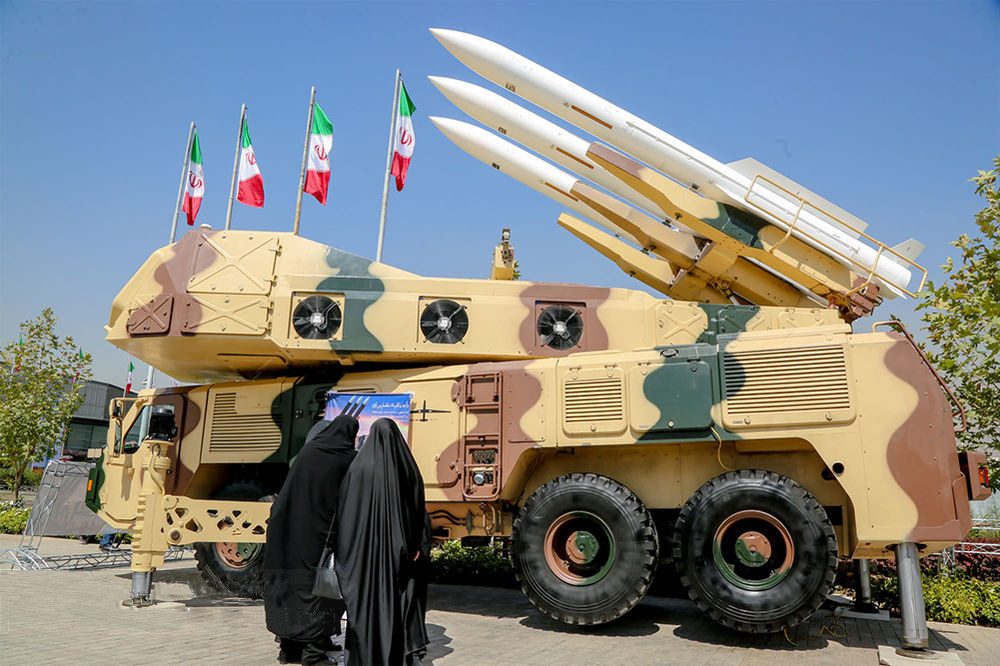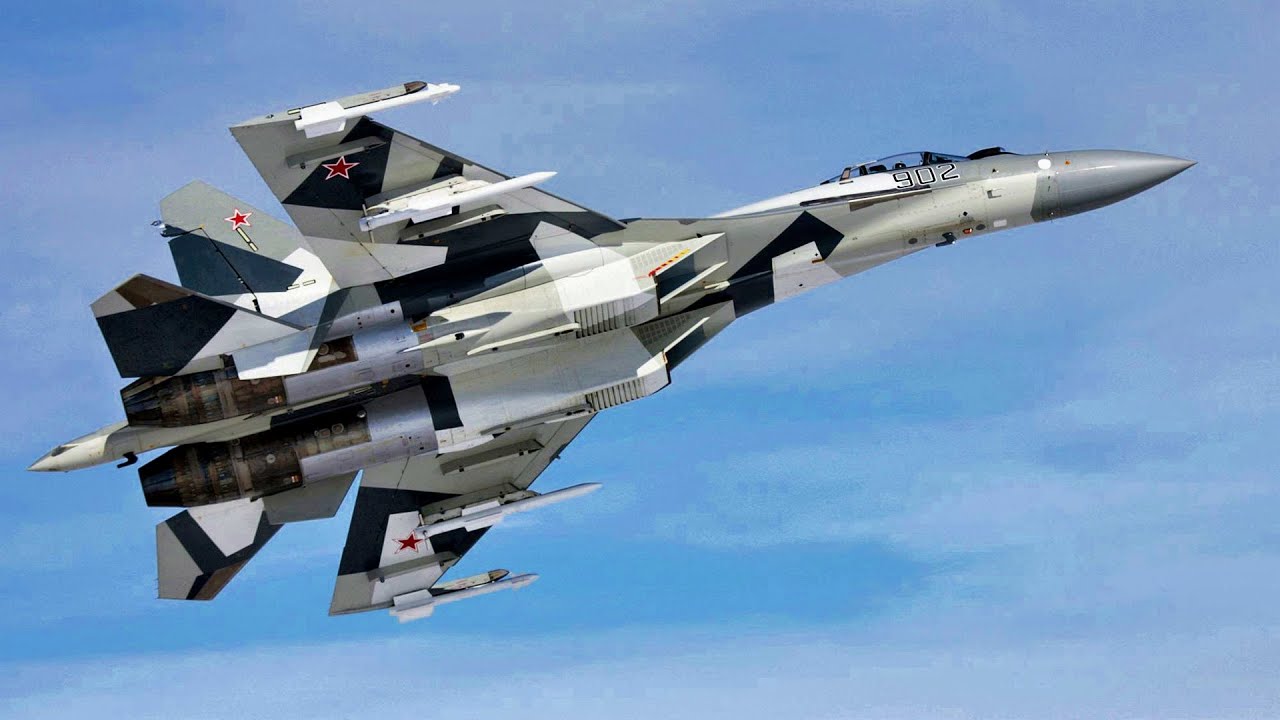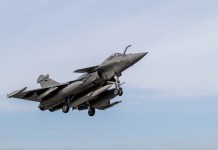Amid consistent reports that Russia could arm Iran with state-of-art weapons, including Su-35 fighter jets, the Sputnik news agency reported that the delivery date and the number of the Flanker-E fighters will remain confidential.
Citing Iran’s mission to the UN in New York, Sputnik said after the end of the Iran-Iraq war in 1988, Iran expressed its interest to buy combat aircraft, and Russia was a willing partner.
“The mission added that the Su-35 combat aircraft are technically acceptable to Iran, so after October 2020, and the end of Iranian restrictions on purchases of conventional weapons (UN Resolution No. 2231), Iran completed the procedures for the acquisition,” the Russian news agency noted.
The Iranian mission to the United Nations did not specify exactly when the deal was completed or how many aircraft Iran would receive from Russia because “No details will be published because they are confidential.”
Iran Preparing For Clash
Earlier, a video emerged showing Iran’s Khordad-3 & Mersad air defense systems coming out of what is reportedly an underground tunnel. Interestingly, the latest video surfaced shortly after Iran unveiled its all-new underground air base in southern Hormozgan Province.
The Khordad-3, or what is also known as the Sevom Khordad air defense system, is said to resemble the Russian-made Buk M2EK air defense missile system, as both systems have a similar layout, except the Iranian system uses only three missiles instead of the four used by the Buk M2EK.
The Khordad-3 is equipped with an active phased array radar, which is said to be able to detect 100 targets at once and engage four targets simultaneously and guide two missiles on each target.
The system can reportedly engage targets up to a range of 105 kilometers and an altitude of up to 30 kilometers.
The Kordad-3 is famous for having shot down an American RQ-4 Global Hawk unmanned aerial vehicle in 2019 over the Strait of Hormuz, marking the first time an Iranian-made air defense system was able to successfully shoot down a hostile target.
BREAKING- #IRAN reveals Secret Underground Air Defense #Tunnel!
Video showing Iran’s Khordad-3 & Mersad Air Defense Systems coming out of #Secret Underground Tunnel weeks after Iran revealed an #Underground Air Base. #IRGC #Israel #missile #military pic.twitter.com/e9wdiJzTk1
— EurAsian Times (@THEEURASIATIMES) February 28, 2023
While the Mersad missile system is meant for medium-range and medium-altitude air defense, it uses Shahin (Falcon) missiles which are reverse-engineered, domestically upgraded versions of the American MIM-23 Hawk surface-to-air missiles.
According to Iranian media sources, the radar of the Morsad system is capable of detecting a target at a distance of 150 kilometers, acquiring a lock on it from 80 kilometers away, and engaging it at a maximum distance of 45 kilometers.
Furthermore, Iranian media outlets claim that the radar has been designed to detect low-observable threats with a radar cross section (RCS) of around 0.5 square meters from 110 kilometers away.
As stated earlier, the latest video comes shortly after Iran revealed an underground air force base in the country’s southern part, which goes by the name of ‘Eagle 44’. This facility is said to be a first-of-its-kind underground air force installation for Iran.

The Chief of Staff of the Iranian Armed Forces, Major General Mohammad Hossein Baqeri, said that the site would be among those used for responding to any potential strikes by Israel.
“Any attack on Iran from our enemies, including Israel, will see a response from our many air force bases, including Eagle 44,” Iran’s armed forces Chief of Staff Mohammad Bagheri told Iran’s official IRNA news agency at the time.
The tactical airbase has been designed to house and prepare a variety of missions, including fighter jets, bombers, and unmanned aerial vehicles (UAVs). According to IRNA, the air base would be home to fighter jets equipped with long-range cruise missiles.
Iran did not disclose the base’s location, however, the New York Times (NY Times) reported that the base is located in a mountainous area in Iran’s southern Hormozgan Province, around 161 kilometers north of the key Strait of Hormuz.
The NY Times report said that the work on the site has been going on since 2013. However, it was decided recently that the underground facility would be used as an airbase, noting that runway construction did not begin until May 2021.
Iran on Tuesday unveiled its first underground air force base, called "Eagle 44", the country’s official news agency IRNA reported.
"It is one of the army's most important air force bases, with fighters equipped with long-range cruise missiles and built in the depths of earth.” pic.twitter.com/KACSXkljyc— Iran International English (@IranIntl_En) February 7, 2023
The report by the NY Times, which examined images released by Iran and satellite images of the site, also uncovered a couple of clues that the base is being prepared for the arrival of Su-35 fighter jets.
Shahriar Heidari, a member of the Iranian Parliament’s National Security Committee, confirmed in January that Iran had placed an order for 24 Su-35 fighter jets, which will be delivered in the upcoming Iranian year, starting on March 21.
Ready To Welcome Su-35 Fighter Jets
Among the clues that Eagle 44 is being prepared as a base for the Su-35s, the first one was seen in the promotional video and photos released by Iran, in which a poster is seen with silhouettes of fighter jets, in which there is one that stands out because it is not of any aircraft currently operated by Iran.
This silhouette resembles the shape of Russia’s advanced 4.5 generation Su-35 aircraft that will soon arrive in Iran, as claimed by Heidari in January.

The second clue was found in the satellite imagery of the site, which shows what seems to be a full-scale mockup of a Flanker-series fighter jet.
According to NY Times’ analysis, the two clues suggest that Iran could intend to use at least some of the Su-35 jets it will acquire at this air base.
It is also important to note that the IRNA had reported earlier that the Su-35 would be housed at Tactical Air Base (TAB) 8 of the Islamic Republic of Iran Air Force (IRIAF), located in the city of Isfahan.
at #Iran’s Eagle 44 underground Air Force base, possible new #Russian Su 35 fighter jets. pic.twitter.com/ZRh9NBXCUX
— MilitaryNews (@MilitaryNewsomg) February 18, 2023
NY Times’ analysis suggests that the Eagle 44 may still be undergoing upgrades in preparation for the delivery of the Su-35 because an existing tunnel entrance seen in the video footage may be too narrow to accommodate the wide Russian jets. However, the satellite imagery shows another tunnel under construction, perhaps for larger planes.
“These (Su-35 mockups) are likely being used in assessing clearances for maneuvering the aircraft throughout the underground facility and could suggest they’ll be based here,” Chris Biggers, a former US government imagery analyst, told the NYT.
Su-35s Could Pose A Significant Challenge
Acquisition of Russian-made Su-35 fighter jets would represent a significant upgrade to Iran’s aerial combat capability, which at the moment, mainly comprises the Cold War-era US-made F-4 Phantom IIs, F-14 Tomcats, and F-5E/F Tiger IIs and domestically duplicated versions thereof, all of which were inherited after the Islamic Revolution of 1979 and are complicated to sustain.
Besides that, Iran has a small number of Soviet-made MiG-29 Fulcrum fighters and Su-24 bombers, the French-made Mirage F1s, and the export version of Chinese-made Chengdu J-7 called the F-7, which is a license-built version of the Soviet MiG-21 fighter.
Introducing Su-35s will bring an unprecedented improvement to the Iranian Air Force’s strength, as it is one of the most sophisticated fighters produced by Russia. Most importantly, it will provide Iran with a 4.5-generation aircraft capability which could pose a considerable challenge to Israel’s plans for any military strike on Iran’s nuclear sites.

While Western analysts dismiss the Su-35’s prospects against Israeli F-35I Adirs, touting the latter’s stealth capability and highly advanced sensors offering exceptional battlefield awareness, the Flanker has some of its strong points that it could leverage to send the F-35 running away from the Iranian airspace, as covered at a great length by EurAsian Times.
Iran also has the Russian-made 3D VHF AESA 1L119 NEBO SVU radar for early warning and alert against the F-35 aircraft.
Experts have long contended that Russian-made VHF (Very High Frequency) radars pose a significant threat to stealth or very-low observable (VLO) targets such as American-made F-35 aircraft.
The VHF band radars typically operate between one- and three-meter wavelengths. Electromagnetic radiation is known to scatter from bodies smaller than their wavelength. This phenomenon is called Rayleigh scattering.
The critics of the F-35 point out that the aircraft’s nose, inlets nozzle, and junctions between fuselage and wings will present as Raleigh regime scattering centers, as they are smaller than the two-meter band favored by Russian VHF radar designers.
However, due to their relatively long wavelength, the VHF radars usually lack sufficient accuracy to guide a missile to a target. The Russian designers aim to provide enough accuracy in a VHF radar to indicate the general vicinity of low RCS targets.
Therefore, the VHF-band NEBO SVU can cue the Irbis-E radar onboard the Su-35, enabling a narrower search and, thus, a longer detection range, as discussed earlier.
According to experts, the NEBO SVU can detect an F-35 from approximately 152 kilometers, a significant distance.
- Contact the author at tanmaykadam700@gmail.com
- Follow EurAsian Times on Google News




